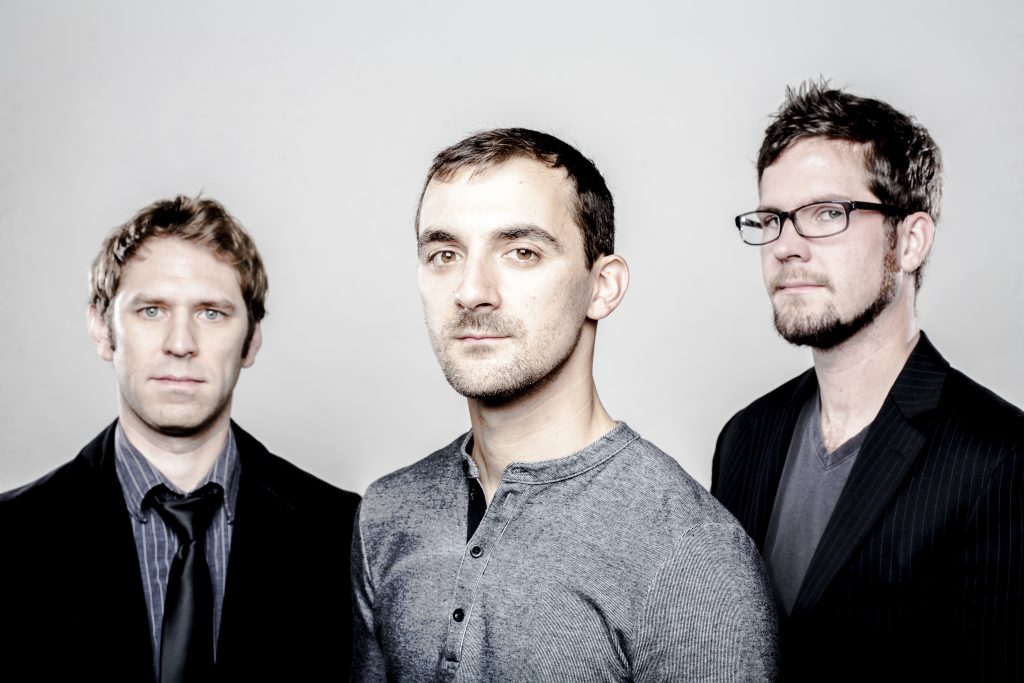Line Upon Line
Jamie Howell, MMus Composition student, tells us about a recent concert and workshop by the group Line Upon Line.
Having arrived from their hometown of Austin, Texas the previous day, the contemporary percussion group Line Upon Line gave a brilliant performance of new and recent music in a lunchtime concert on Monday 6th March. Composed in 1989, the opening piece, Okho by Iannis Xenakis, dates from an earlier time than anything else in the programme but it was played with updated instrumentation and with a verve and groove which set high expectations for what was to follow. A complete change of sonority came next with Thomas Meadowcroft’s The Great Knot which used everyday objects such as cups, bowls and toys to create a unique sound world alongside traditional percussion and prerecorded electronica. [99 Words] brought a change of intensity with composer Andrew Greenwald using silence and unusual ways of producing sounds on common instruments in a more free, arhythmic manner. The concert finished with Steven Snowdon’s Van Gogh from Space which mixed sounds reminiscent of 1950s sci-fi with complex rhythms by using a combination of traditional instruments played in unconventional ways and metal bowls which rang with rich, unpredictable harmonics.

The concert was followed by a workshop in which the group performed and commented on works by three post graduate composers from the University of Southampton Music Department. My piece, It Is Vain To Do With More What Can Be Done With Fewer, was up first and it was extremely satisfying to hear it played with such commitment by the group. The performers made numerous points about the piece which will allow me to develop the piece into a fully fledged composition.
Donat Debreceni had composed a piece entitled Cor Conditions (States of Rhythmic Progressivity) using a classic rock drum kit with orchestral bass drum and congas which was an exploration of contrasts between static and active sections of music. A slow building introduction lead to some parts reminiscent of rock music and then developed further into complex rhythmic structures. This allowed for some very interesting discussion about the best way for composers to communicate their intentions when very complex textures are asked for.
Finishing the day was rep – roll – trade by Harry Matthews written for three snare drums tuned to different pitches. This was a fascinating piece which explored the different sounds that can be produced from one drum and the way three players can interact with each other using similar sounds. The players were asked to play in unison at times or act independently and improvise at others. The performers brought up interesting points about the physical constraints on certain actions they are asked to perform and then to a broader discussion about the relationship between composers and performers.
Everybody got a great deal out of the day listening to and interacting with these world class performers.
Jamie Howell

